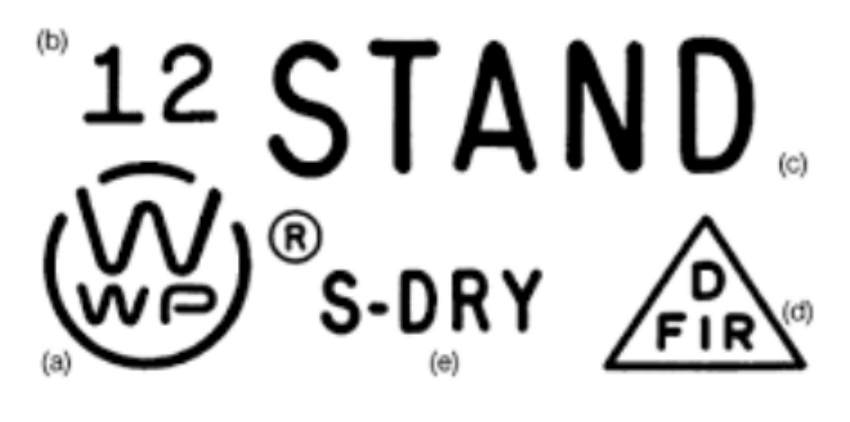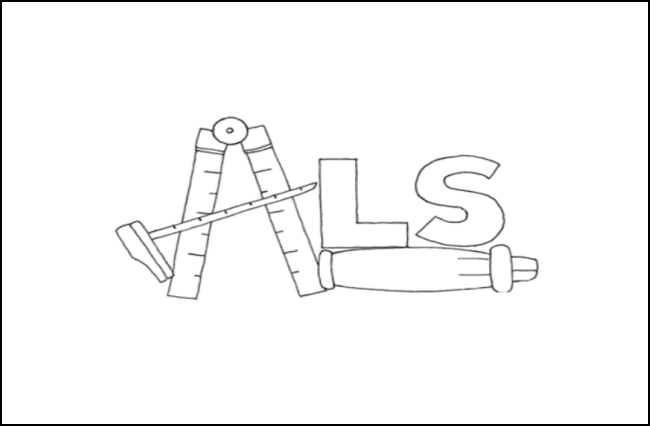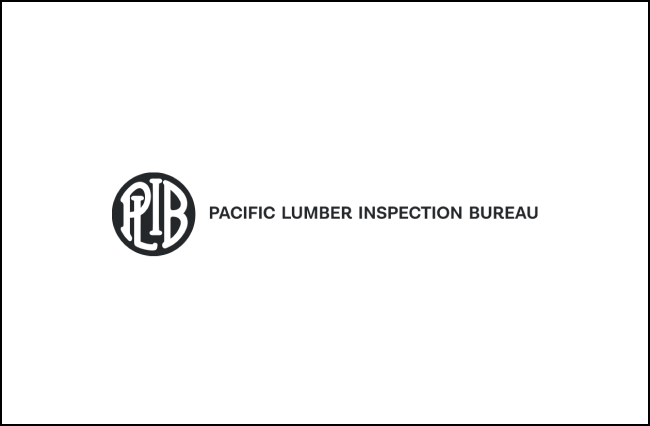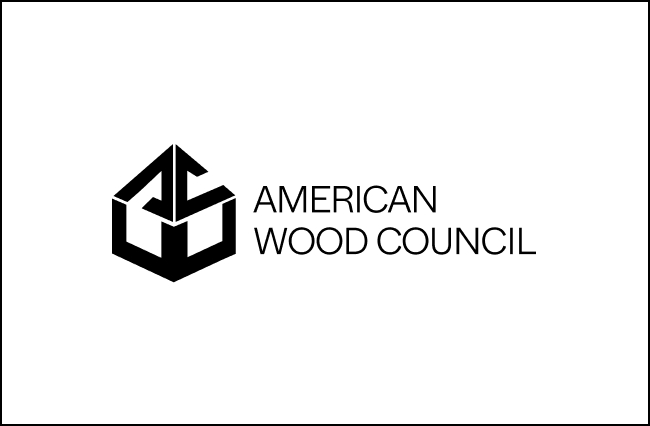Select Lumber Grade
- Select Structural
- #1 Structural
- #2 Structural
- #3 Structural
- Construction Light
- Standard Grade
- #1 Utility Grade
Checking is a crack in the board that happens along the growth rings that does not go through the entire board.
- Not Limited
Grain is determined by the number of growth rings in the board. Typically measured in “rings per inch” and is viewed from the end grain of the board.
- 4 rings + per inch
Knots are the naturally occurring defect in the board caused by branches as the tree grows. Small tight knots are perfectly fine but large loose knots that may fall out are of greater concern.
- Up to 3/4″ Edge Wide Face, 7/8″ Centerline Wide Face, 3/4″ Unsound/Loose Knot per 4′
Pitch or sap of a tree is how trees heal wounds from pruning or fight off other diseases that could be otherwise harmful to a healthy tree.
- Not Limited
Pitch pockets are places in the board where the tree has grown around the sap enclosing the wound. These pockets coupled with the tight bark layer can be found in the wide face of a board and are not the same as edge wane.
- Not Limited
Shake is the separation of woods growth rings that occurs either on the face of the wood or below the surface.
- Up to 2′
Skips are a manufacturing defect where planners and saws “bounce” along a board or pull the grain causing and uneven surface to be presented.
- Hit and Miss Maximum of 10%
Grain slope is a measurement of the deviation from the natural growth of the board. Simply put, it is the board cut parallel to the grain or across it.
- 1 in 12
Splits are cracks in the wood that go all the way through the board.
- Equal to Width
Stains or discolorations can be caused by insects, fungal decay, or heartwood/ sapwood. Some stains have no effect on the performance of the wood while others limit the strength of the wood because they come from the fast-growing center of the tree.
- Less than 10%
Wane is the uneven edge of the tree that used to contain the bark of the tree before it was milled.
- 1/2 Thickness or 1/3 Width for 1/4 of Length
Warp in a board is the deviation from straight and true and is called by many different names.
A bow in the board is the end to end change on the wide face. This looks like the bottom of a boat.
A crook in the board is the warping that happens along the narrow edge. This looks like a hockey stick.
A cup in the board is when the wide face curves with the flat grain creating a hallow in the board. This looks like a canoe.
A twist in the board is a combination of multiple warping defects. This often looks like a boomerang or an airplane propeller.
- Light
The clear wood requirement is the amount of good wood left after all the defects have been removed from the clean faces of the wood.
- At Least 80%
Checking is a crack in the board that happens along the growth rings that does not go through the entire board.
- Not Limited
Grain is determined by the number of growth rings in the board. Typically measured in “rings per inch” and is viewed from the end grain of the board.
- 4 rings + per inch
Knots are the naturally occurring defect in the board caused by branches as the tree grows. Small tight knots are perfectly fine but large loose knots that may fall out are of greater concern.
- Up to 1″ Edge Wide Face, 1 1/2″ Centerline Wide Face, 1″ Unsound/Loose Knot per 3′
Pitch or sap of a tree is how trees heal wounds from pruning or fight off other diseases that could be otherwise harmful to a healthy tree.
- Not Limited
Pitch pockets are places in the board where the tree has grown around the sap enclosing the wound. These pockets coupled with the tight bark layer can be found in the wide face of a board and are not the same as edge wane.
- Not Limited
Shake is the separation of woods growth rings that occurs either on the face of the wood or below the surface.
- Up to 2′
Skips are a manufacturing defect where planners and saws “bounce” along a board or pull the grain causing and uneven surface to be presented.
- Hit and Miss Maximum of 10%
Grain slope is a measurement of the deviation from the natural growth of the board. Simply put, it is the board cut parallel to the grain or across it.
- 1 in 10
Splits are cracks in the wood that go all the way through the board.
- Equal to Width
Stains or discolorations can be caused by insects, fungal decay, or heartwood/ sapwood. Some stains have no effect on the performance of the wood while others limit the strength of the wood because they come from the fast-growing center of the tree.
- Firm Heart Allowed
Wane is the uneven edge of the tree that used to contain the bark of the tree before it was milled.
- 1/2 Thickness or 1/3 Width for 1/4 of Length
Warp in a board is the deviation from straight and true and is called by many different names.
A bow in the board is the end to end change on the wide face. This looks like the bottom of a boat.
A crook in the board is the warping that happens along the narrow edge. This looks like a hockey stick.
A cup in the board is when the wide face curves with the flat grain creating a hallow in the board. This looks like a canoe.
A twist in the board is a combination of multiple warping defects. This often looks like a boomerang or an airplane propeller.
- Light
The clear wood requirement is the amount of good wood left after all the defects have been removed from the clean faces of the wood.
- At Least 75%
Checking is a crack in the board that happens along the growth rings that does not go through the entire board.
- Not Limited
Grain is determined by the number of growth rings in the board. Typically measured in “rings per inch” and is viewed from the end grain of the board.
- 4 rings + per inch
Knots are the naturally occurring defect in the board caused by branches as the tree grows. Small tight knots are perfectly fine but large loose knots that may fall out are of greater concern.
- Up to 1 1/4″ Edge Wide Face, 2″ Centerline Wide Face, 1 1/4″ Unsound/Loose Knot per 2′
Pitch or sap of a tree is how trees heal wounds from pruning or fight off other diseases that could be otherwise harmful to a healthy tree.
- Not Limited
Pitch pockets are places in the board where the tree has grown around the sap enclosing the wound. These pockets coupled with the tight bark layer can be found in the wide face of a board and are not the same as edge wane.
- Not Limited
Shake is the separation of woods growth rings that occurs either on the face of the wood or below the surface.
- Up to 3′ for 1/4 of Length
Skips are a manufacturing defect where planners and saws “bounce” along a board or pull the grain causing and uneven surface to be presented.
- Hit and Miss with Heavy Skip Maximum 5% less than 2′ in Length
Grain slope is a measurement of the deviation from the natural growth of the board. Simply put, it is the board cut parallel to the grain or across it.
- 1 in 8
Splits are cracks in the wood that go all the way through the board.
- Equal to 1 1/2 time the Width of Board
Stains or discolorations can be caused by insects, fungal decay, or heartwood/ sapwood. Some stains have no effect on the performance of the wood while others limit the strength of the wood because they come from the fast-growing center of the tree.
- Not Limited
Wane is the uneven edge of the tree that used to contain the bark of the tree before it was milled.
- 2/3 Thickness or 1/2 Width for 1/4 of Length
Warp in a board is the deviation from straight and true and is called by many different names.
A bow in the board is the end to end change on the wide face. This looks like the bottom of a boat.
A crook in the board is the warping that happens along the narrow edge. This looks like a hockey stick.
A cup in the board is when the wide face curves with the flat grain creating a hallow in the board. This looks like a canoe.
A twist in the board is a combination of multiple warping defects. This often looks like a boomerang or an airplane propeller.
- Light
The clear wood requirement is the amount of good wood left after all the defects have been removed from the clean faces of the wood.
- At Least 66%
Checking is a crack in the board that happens along the growth rings that does not go through the entire board.
- Not Limited
Grain is determined by the number of growth rings in the board. Typically measured in “rings per inch” and is viewed from the end grain of the board.
- 4 rings + per inch
Knots are the naturally occurring defect in the board caused by branches as the tree grows. Small tight knots are perfectly fine but large loose knots that may fall out are of greater concern.
- Up to 1 3/4″ Edge Wide Face, 2 1/2″ Centerline Wide Face, 1 3/4″ Unsound/Loose Knot per 1′
Pitch or sap of a tree is how trees heal wounds from pruning or fight off other diseases that could be otherwise harmful to a healthy tree.
- Not Limited
Pitch pockets are places in the board where the tree has grown around the sap enclosing the wound. These pockets coupled with the tight bark layer can be found in the wide face of a board and are not the same as edge wane.
- Not Limited
Shake is the separation of woods growth rings that occurs either on the face of the wood or below the surface.
- Less than 1/3 of Length
Skips are a manufacturing defect where planners and saws “bounce” along a board or pull the grain causing and uneven surface to be presented.
- Hit and Miss with Heavy Skip Maximum of 10%
Grain slope is a measurement of the deviation from the natural growth of the board. Simply put, it is the board cut parallel to the grain or across it.
- 1 in 4
Splits are cracks in the wood that go all the way through the board.
- Equal to to 1/6 Length
Stains or discolorations can be caused by insects, fungal decay, or heartwood/ sapwood. Some stains have no effect on the performance of the wood while others limit the strength of the wood because they come from the fast-growing center of the tree.
- Not Limited
Wane is the uneven edge of the tree that used to contain the bark of the tree before it was milled.
- 7/8 Thickness or 3/4 Width for 1/4 of Length
Warp in a board is the deviation from straight and true and is called by many different names.
A bow in the board is the end to end change on the wide face. This looks like the bottom of a boat.
A crook in the board is the warping that happens along the narrow edge. This looks like a hockey stick.
A cup in the board is when the wide face curves with the flat grain creating a hallow in the board. This looks like a canoe.
A twist in the board is a combination of multiple warping defects. This often looks like a boomerang or an airplane propeller.
- Medium
The clear wood requirement is the amount of good wood left after all the defects have been removed from the clean faces of the wood.
- At Least 50%
Checking is a crack in the board that happens along the growth rings that does not go through the entire board.
- Not Limited
Grain is determined by the number of growth rings in the board. Typically measured in “rings per inch” and is viewed from the end grain of the board.
- 4 rings + per inch
Knots are the naturally occurring defect in the board caused by branches as the tree grows. Small tight knots are perfectly fine but large loose knots that may fall out are of greater concern.
- Up to 1 1/2″ Anywhere on Wide Face, 1″ Unsound/Loose Knot per 3′
Pitch or sap of a tree is how trees heal wounds from pruning or fight off other diseases that could be otherwise harmful to a healthy tree.
- Not Limited
Pitch pockets are places in the board where the tree has grown around the sap enclosing the wound. These pockets coupled with the tight bark layer can be found in the wide face of a board and are not the same as edge wane.
- Not Limited
Shake is the separation of woods growth rings that occurs either on the face of the wood or below the surface.
- Up to 2′ in Length
Skips are a manufacturing defect where planners and saws “bounce” along a board or pull the grain causing and uneven surface to be presented.
- Hit and Miss Maximum of 10%
Grain slope is a measurement of the deviation from the natural growth of the board. Simply put, it is the board cut parallel to the grain or across it.
- 1 in 6
Splits are cracks in the wood that go all the way through the board.
- Equal to Width
Stains or discolorations can be caused by insects, fungal decay, or heartwood/ sapwood. Some stains have no effect on the performance of the wood while others limit the strength of the wood because they come from the fast-growing center of the tree.
- Firm Heart Allowed
Wane is the uneven edge of the tree that used to contain the bark of the tree before it was milled.
- 1/2 Thickness or 1/3 Width for 1/4 of Length
Warp in a board is the deviation from straight and true and is called by many different names.
A bow in the board is the end to end change on the wide face. This looks like the bottom of a boat.
A crook in the board is the warping that happens along the narrow edge. This looks like a hockey stick.
A cup in the board is when the wide face curves with the flat grain creating a hallow in the board. This looks like a canoe.
A twist in the board is a combination of multiple warping defects. This often looks like a boomerang or an airplane propeller.
- Light
The clear wood requirement is the amount of good wood left after all the defects have been removed from the clean faces of the wood.
- At Least 57%
Checking is a crack in the board that happens along the growth rings that does not go through the entire board.
- Not Limited
Grain is determined by the number of growth rings in the board. Typically measured in “rings per inch” and is viewed from the end grain of the board.
- Not Limited
Knots are the naturally occurring defect in the board caused by branches as the tree grows. Small tight knots are perfectly fine but large loose knots that may fall out are of greater concern.
- Up to 2″ Anywhere on Wide Face, 1 1/4″ Unsound/Loose Knot per 2′
Pitch or sap of a tree is how trees heal wounds from pruning or fight off other diseases that could be otherwise harmful to a healthy tree.
- Not Limited
Pitch pockets are places in the board where the tree has grown around the sap enclosing the wound. These pockets coupled with the tight bark layer can be found in the wide face of a board and are not the same as edge wane.
- Not Limited
Shake is the separation of woods growth rings that occurs either on the face of the wood or below the surface.
- Up to 3′ or 1/4 of Length (Whichever is Greater)
Skips are a manufacturing defect where planners and saws “bounce” along a board or pull the grain causing and uneven surface to be presented.
- Max 10%
Grain slope is a measurement of the deviation from the natural growth of the board. Simply put, it is the board cut parallel to the grain or across it.
- 1 in 4
Splits are cracks in the wood that go all the way through the board.
- Equal to 1 1/2 time the Width of Board
Stains or discolorations can be caused by insects, fungal decay, or heartwood/ sapwood. Some stains have no effect on the performance of the wood while others limit the strength of the wood because they come from the fast-growing center of the tree.
- Not Limited
Wane is the uneven edge of the tree that used to contain the bark of the tree before it was milled.
- 2/3 Thickness or 1/2 Width for 1/4 of Length
Warp in a board is the deviation from straight and true and is called by many different names.
A bow in the board is the end to end change on the wide face. This looks like the bottom of a boat.
A crook in the board is the warping that happens along the narrow edge. This looks like a hockey stick.
A cup in the board is when the wide face curves with the flat grain creating a hallow in the board. This looks like a canoe.
A twist in the board is a combination of multiple warping defects. This often looks like a boomerang or an airplane propeller.
- Light
The clear wood requirement is the amount of good wood left after all the defects have been removed from the clean faces of the wood.
- At Least 43%
Checking is a crack in the board that happens along the growth rings that does not go through the entire board.
- Not Limited
Grain is determined by the number of growth rings in the board. Typically measured in “rings per inch” and is viewed from the end grain of the board.
- Not Limited
Knots are the naturally occurring defect in the board caused by branches as the tree grows. Small tight knots are perfectly fine but large loose knots that may fall out are of greater concern.
- Up to 2 1/2″ Anywhere on Wide Face, 1 1/2″ Unsound/Loose Knot per 1′
Pitch or sap of a tree is how trees heal wounds from pruning or fight off other diseases that could be otherwise harmful to a healthy tree.
- Not Limited
Pitch pockets are places in the board where the tree has grown around the sap enclosing the wound. These pockets coupled with the tight bark layer can be found in the wide face of a board and are not the same as edge wane.
- Not Limited
Shake is the separation of woods growth rings that occurs either on the face of the wood or below the surface.
- Up to 1/3 of Length
Skips are a manufacturing defect where planners and saws “bounce” along a board or pull the grain causing and uneven surface to be presented.
- Hit and Miss with Heavy Skip Maximum of 10%
Grain slope is a measurement of the deviation from the natural growth of the board. Simply put, it is the board cut parallel to the grain or across it.
- 1 in 4
Splits are cracks in the wood that go all the way through the board.
- Equal to 1/6 Length
Stains or discolorations can be caused by insects, fungal decay, or heartwood/ sapwood. Some stains have no effect on the performance of the wood while others limit the strength of the wood because they come from the fast-growing center of the tree.
- Not Limited
Wane is the uneven edge of the tree that used to contain the bark of the tree before it was milled.
- 7/8 Thickness or 3/4 Width for 1/4 of Length
Warp in a board is the deviation from straight and true and is called by many different names.
A bow in the board is the end to end change on the wide face. This looks like the bottom of a boat.
A crook in the board is the warping that happens along the narrow edge. This looks like a hockey stick.
A cup in the board is when the wide face curves with the flat grain creating a hallow in the board. This looks like a canoe.
A twist in the board is a combination of multiple warping defects. This often looks like a boomerang or an airplane propeller.
- Medium
The clear wood requirement is the amount of good wood left after all the defects have been removed from the clean faces of the wood.
- At Least 29%
Lumber Grade Stamps

Decoding a lumber stamp:
The final piece of the lumber puzzle is the ability to look at a grade stamp to understand what it is telling you. All stamps on lumber tell us the exact same information:
(a) the grading agency
(b) the mill designation
(c) the approved grade
(d) the wood species group
(e) and the moisture content
Common Application
In most jurisdictions, the building code requires #2 Structural, commonly referred to as #2 & Better, and that is why it is found at most lumber yards and home centers in your area. Where yards will differ is on the primary species family they carry. One yard might sell Douglas fir for the strength characteristics while the another chooses Western hemlock because it is cheaper while still meeting the same building codes.
In many commercial uses, select structural lumber is required because of the strength of the wood fiber. Typically, these are applications with very high point loads due to the increased capacity of the structure itself for storage or for people. Most residential construction that is done with Select Structural lumber is done because the builder and the homeowner prefer the quality of the fiber.
The lesser grades of lumber are often used where structural codes do not matter in industrial or temporary applications. These can be things like pallets and packaging for shipment or concrete footing work where one good face will usually be adequate.
Whatever lumber you choose, knowing the grade will help you determine if it is right for your
project. Grading used in conjunction with the design tables will help make sure that your
project lasts for as long as you want it to. For more information on the framing lumber
grading rules, please visit the following sources





